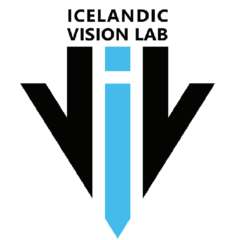The original version of the following list of visual stimulus sets was compiled by Johanna Margret Sigurdardottir and will be updated as needed. We neither host nor do we provide copies of the stimuli. Reseachers who may wish to use a particular stimulus set should seek further information, including on possible licences, e.g. by following the provided web links, reading the referenced papers, and/or emailing the listed contact person/persons for a particular stimulus set. If you notice an error, know of a stimulus set that should be included, or have any other questions or comments, please contact Heida Maria Sigurdardottir (heidasi(Replace this parenthesis with the @ sign)hi.is). The list is provided as is without any warranty whatsoever.
These databases contain stimuli which are supposed to elicit various emotions.
The Geneva Affective Picture Database
Description
In this set there are 730 images which are supposed to elicit either positive or negative emotions. The negative images are e.g. of dangerous animals such as spiders and snakes or of scenes that show human or animal mistreatment. The set also has positive or neutral pictures, e.g. of babies and young ones of various species. There is also information on the effect each picture has on people emotionally according to previous research.
Link
http://www.affective-sciences.org/en/home/research/materials-and-online-research/research-material/
License
The dataset is available for download here.
Reference(s)
Dan-Glauser, E. S., & Scherer, K. R. (2011). The Geneva affective picture database (GAPED): a new 730-picture database focusing on valence and normative significance. Behavior Research Methods, 43(2), 468-477.
International Affective Picture System (IAPS)
Description
The International Affective Picture System (IAPS) is being developed to provide a set of normative emotional stimuli for experimental investigations of emotion and attention. The goal is to develop a large set of standardized, emotionally-evocative, internationally-accessible, colour photographs that includes contents across a wide range of semantic categories.
Link
http://csea.phhp.ufl.edu/media.html#topmedia
License
In order to access the dataset, fill out the following Request Form and email to media(Replace this parenthesis with the @ sign)cseamedia.org.
Reference(s)
Lang, P. J., Bradley, M. M., & Cuthbert, B. N. (1997). International affective picture system (IAPS): Technical manual and affective ratings. NIMH Center for the Study of Emotion and Attention, 1(39-58), 3.
Lang, P., & Bradley, M. M. (2007). The International Affective Picture System (IAPS) in the study of emotion and attention. Handbook of emotion elicitation and assessment, 29, 70-73.
Open Affective Standardized Image Set (OASIS)
Description
The Open Affective Standardized Image Set (OASIS) is an open-access online stimulus set containing 900 colour images depicting a broad spectrum of themes, including humans, animals, objects, and scenes, along with normative ratings on two affective dimensions—valence (i.e., the degree of positive or negative affective response that the image evokes) and arousal (i.e., the intensity of the affective response that the image evokes).
Link
License
The images can be downloaded, used, and modified free of charge for research purposes using the above link. Along with the images, there is an accompanying data file listing the unique identifier, theme, category, source, valence mean, valence standard deviation, valence sample size, arousal mean, arousal standard deviation, and arousal sample size for each image.
Reference(s)
Brielmann, A. A., & Pelli, D. G. (2019). Intense Beauty Requires Intense Pleasure. Frontiers in Psychology, 10. https://doi.org/10.3389/fpsyg.2019.02420
Kurdi, B., Lozano, S., & Banaji, M. R. (2017). Introducing the open affective standardized image set (OASIS). Behavior Research Methods, 49(2), 457-470.
